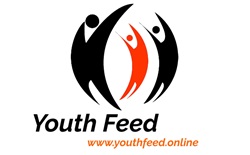TECHNOLOGY: free IT course in 2024

Free Online Courses: Unlock Your Potential in the Digital Age Information Technology: A Gateway to Endless Possibilities In today’s rapidly evolving digital landscape, the demand for skilled IT professionals has never been higher.
- TECHNOLOGY, Our comprehensive IT courses offer top-notch training in the latest technologies and tools, equipping you with the knowledge and expertise to thrive in this dynamic field. From programming languages and web development to cutting-edge cybersecurity techniques, our courses cover a wide range of topics that are essential for success in the modern workplace. Whether you’re a complete beginner or an experienced IT professional seeking to enhance your skills, our diverse curriculum is designed to cater to learners at all levels.
Dive into the world of coding and learn to bring your digital ideas to life through hands-on training in programming languages such as Python, Java, and JavaScript. Explore the intricacies of web development, mastering front-end and back-end technologies to create responsive and user-friendly websites. Delve into the critical realm of cybersecurity, where you’ll learn to safeguard digital assets and protect against potential threats. Beyond technical skills, our courses also focus on developing essential soft skills, such as problem-solving, critical thinking, and effective communication – attributes that are highly valued in the IT industry. By honing these capabilities.

TECHNOLOGY, you’ll be better equipped to navigate the dynamic challenges and collaborate seamlessly with cross-functional teams. The best part? All of our IT courses are 100% free and available online, making high-quality education accessible to learners worldwide. Earn a free certificate upon successful completion and showcase your newfound expertise to potential employers or clients. Embark on your journey to becoming an IT trailblazer and unlock a world of opportunities. Explore our comprehensive course catalog and start your transformative learning experience today.
- Online Courses by Subject iOS Swift: Swift is a programming language developed by Apple for development on iOS, macOS, watchOS, tvOS, and Linux. It is a modern, fast, and efficient language that is designed to be safe, concise, and expressive. Swift courses teach students how to build iOS apps using the latest tools and technologies, including Xcode, SwiftUI, and the Cocoa Touch framework.
TECHNOLOGY, These courses cover topics such as Swift syntax, data structures, control flow, functions, and object-oriented programming, as well as how to create user interfaces, handle data, and integrate third-party libraries and APIs. Data Science: Data science courses and tutorials cover a wide range of topics, including machine learning, data analysis, statistics, and programming in Python and R. These courses are suitable for beginners to experts, and they typically start with an introduction to the fundamentals of data science, such as data collection, cleaning, and preprocessing.
Table of Contents
- Students then dive into more advanced topics, such as supervised and unsupervised learning algorithms, natural language processing, and data visualization. The courses often include hands-on projects and case studies to help students apply what they’ve learned to real-world problems. Google Analytics: Google Analytics is a powerful tool offered by Google to record statistics for websites and applications. It provides detailed information about website traffic, user behavior, and marketing effectiveness. Google Analytics courses teach students how to set up and configure Google Analytics, create custom reports and dashboards, and use the data to make informed decisions about their digital marketing strategies. TECHNOLOGY
These courses cover topics such as data collection, audience analysis, acquisition and behavior analysis, and goal tracking and conversion optimization. Git: Git is a file versioning system, mainly used for programming code management. It is a distributed version control system that allows developers to track changes to their code over time, collaborate with others, and manage complex projects. Git courses cover the basics of using Git, such as initializing a repository, committing changes, branching and merging, and resolving conflicts. TECHNOLOGY
They also explore more advanced Git concepts, such as remote repositories, pull requests, and git workflows. Machine Learning: Machine learning is a subfield of engineering and computer science that evolved from the study of pattern recognition and the theory of computational learning in artificial intelligence. It involves the development of algorithms and statistical models that enable computers to perform specific tasks without being explicitly programmed. Machine learning courses cover topics such as supervised and unsupervised learning, regression and classification algorithms, neural networks, and deep learning.

TECHNOLOGY, Students learn how to implement machine learning models using popular programming languages and libraries, and how to apply these techniques to solve real-world problems. Ruby: Ruby is a dynamic, open-source programming language with a focus on simplicity and productivity. It has an elegant syntax that is easy to read and write, making it a popular choice for web development, scripting, and automation. Ruby courses teach students the fundamentals of the language, including data types, control structures, object-oriented programming, and standard library modules.
- They also cover web development frameworks like Ruby on Rails, and explore topics such as testing, deployment, and working with databases. CSS is a programming language developed by Microsoft that is part of the .NET platform. It is a widely-used language for building a variety of applications, including desktop software, mobile apps, and games. CSS courses cover the basics of the language, such as data types, control structures, and object-oriented programming, as well as more advanced topics like LINQ, async/await, and game development with Unity. Students also learn how to integrate CSS with other .NET technologies, such as ASP.NET and Xamarin.
Java: Java courses are educational programs focused on teaching the Java programming language, which is widely used for developing web applications, desktop software, and systems for mobile devices. These courses cover the syntax and semantics of the Java language, as well as the Java Virtual Machine (JVM) and the Java Standard Edition (Java SE) and Enterprise Edition (Java EE) platforms. Students learn how to create Java applications, work with data structures and algorithms, and use Java’s extensive standard library and third-party frameworks and libraries. TECHNOLOGY
Python: Python is a very dynamic, high-level programming language that can be used to perform a wide range of tasks, from web development and data analysis to scientific computing and machine learning. Python courses teach students the fundamentals of the language, including data types, control structures, functions, and object-oriented programming. TECHNOLOGY They also explore the rich ecosystem of Python libraries and frameworks, such as NumPy, Pandas, and Scikit-learn, which are commonly used in data science and machine learning applications.
SQL Server: Microsoft SQL Server is a relational database management system developed by Sybase in partnership with Microsoft. SQL Server courses teach students how to design, implement, and manage database systems using this powerful platform. These courses cover topics such as SQL syntax, data modeling, database administration, TECHNOLOGY, and performance optimization. Students also learn how to integrate SQL Server with other Microsoft technologies, such as .NET and Power BI, and how to develop applications that interact with SQL Server databases.
- HTML (Hypertext Markup Language) is a standard language used to create and structure web pages. It is one of the most widely used languages today for storing and presenting information on the internet. HTML provides the basic structure and content of web pages, allowing users to add text, images, videos, links, and other elements to create an online presence. Android is a popular, Linux-based operating system primarily developed for mobile devices such as smartphones and tablets. It is the most widely used mobile OS in the world, powering a vast array of devices from various manufacturers. TECHNOLOGY
Android’s open-source nature and customizability have made it a dominant force in the smartphone market, challenging the iOS platform from Apple. React Native is a JavaScript library created by Facebook that allows developers to build native mobile applications for both Android and iOS platforms using a single codebase. TECHNOLOGY, By leveraging React’s component-based architecture and using native UI components, React Native enables developers to create high-performance, cross-platform apps with a native look and feel, without the need to learn platform-specific languages like Java or Swift.
- Flutter is an open-source user interface (UI) development kit created by Google. Unlike React Native, which uses native UI components, Flutter uses its own high-performance rendering engine to create natively compiled applications for both Android and iOS. This allows for a more consistent and customizable UI experience across platforms, while still providing native performance and functionality. React JS, also known as ReactJS or simply React, is a JavaScript library for building user interfaces. TECHNOLOGY, Developed and maintained by Facebook, Instagram, and a community of individual developers, React has become one of the most popular front-end frameworks for building web applications.
TECHNOLOGY, It utilizes a component-based architecture and a virtual DOM (Document Object Model) to efficiently update and render the UI, leading to better performance and a more responsive user experience. WordPress is the world’s most popular content management system (CMS) and powers a significant portion of the internet. It is a free and open-source platform that allows users to easily create, manage, and maintain websites, blogs, and online stores.

- WordPress’s vast ecosystem of plugins, themes, and tools has made it a go-to solution for individuals, small businesses, and large enterprises alike, enabling them to build and customize their online presence with ease. JavaScript is a widely used programming language that is one of the three core technology of the World Wide Web, along with HTML and CSS. TECHNOLOGY, It is primarily used for adding interactivity and dynamic behavior to web pages, enabling features such as drop-down menus, image sliders, form validations, and pop-ups. JavaScript has also expanded beyond the browser, with the introduction of Node.js, allowing developers to use it for server-side scripting and building full-stack web applications.




